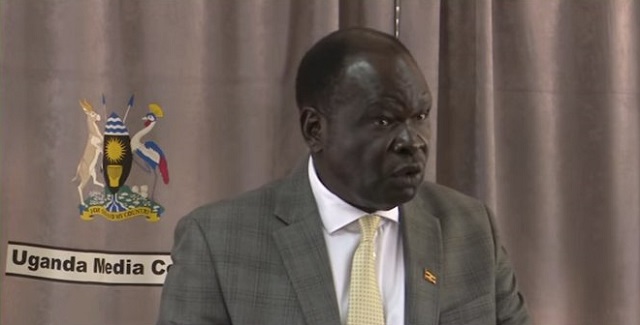
Kampala, Uganda | THE INDEPENDENT | Gulu, Jinja and Kasese have been rated among the districts that were worst hit by food insecurity for months leading to August due to effects of the lockdown instituted to curb the further spread of COVID-19.
According to a new report released by the World Food Programme-WFP Uganda country office on Wednesday, people in nine urban areas in the country faced crisis levels of food insecurity and the situation is expected to remain the same for areas like Kasese and Gulu even as the lockdown has been lifted.
In those areas one in three people struggled to find nutritious food every day. The findings which were arrived at through monitoring via phone call by Uganda Bureau of Statistics and United Nations agencies in 13 urban areas, refugee hosting districts and the Karamoja region were received by Eng. Hillary Onek the Minister for Disaster Preparedness and Refugees who said this gives pointers on what areas deserve attention of government resources.
“With these new findings, we now know, reliably, who the most food-insecure people are in Uganda, where they are and what we can do to save lives and preserve livelihoods. Such knowledge is critical before we take any decisions,” Onek said.
The report attributes crisis food insecurity to the loss of livelihoods in the informal sector, tourism, the travel and events industry and the education sector, reduced remittances and reduced commercial networks due to the closure of borders.
But, while commenting on the findings, Agnes Kirabo, the Executive Director of Food Rights Alliance said the widespread outcry for food aid across the country at the height of the lockdown shows that the majority of the population had challenges accessing food.
She said for districts like Gulu, it’s perturbing to be rated among the most insecure yet they are located at exit routes for food.
She says that while food rations by the government would have come in handy during this period, the attempt to distribute food was marred by irregularities with Uganda National Bureau of Standards findings declaring 80 per cent of the food unfit for human consumption.
She adds that it was wrong for the government to accept food for mass consumption from individual donations and going forward it should be a lesson that the country needs food reserves for such emergencies.
However, a total of up to 10,000 calls were made each month to monitor food security in the selected areas.
In the refugee areas for instance, they found all the 13 settlement sites experienced worst levels of hunger between June and August. And, the picture was the same in the host districts with over 1.3million Ugandans found to be grappling with hunger.
When it comes to the Karamoja region, there was high malnutrition among the children, pregnant and nursing women, with malnutrition above emergency levels in Moroto and Napak.
The situation in Karamoja and the refugee areas was worsened by the fact that rations have been cut and yet the World Food Programme (WFP) says the status quo will be maintained for some time.
“Ration cuts for refugees will remain in place until we secure sufficient funding. To be able to provide full rations for refugees in the settlements until the end of 2020, WFP needs nearly USD 15.3 million immediately,” said WFP Uganda Country Director El-Khidir Daloum.
********
URN
 The Independent Uganda: You get the Truth we Pay the Price
The Independent Uganda: You get the Truth we Pay the Price


